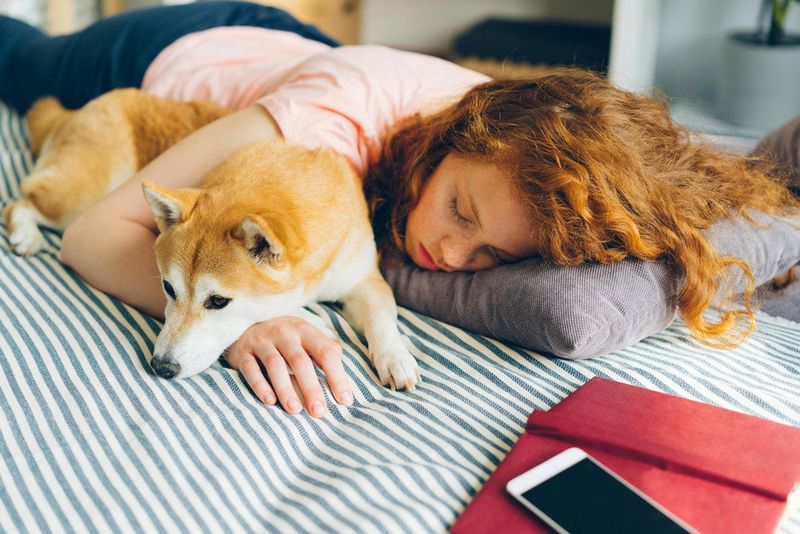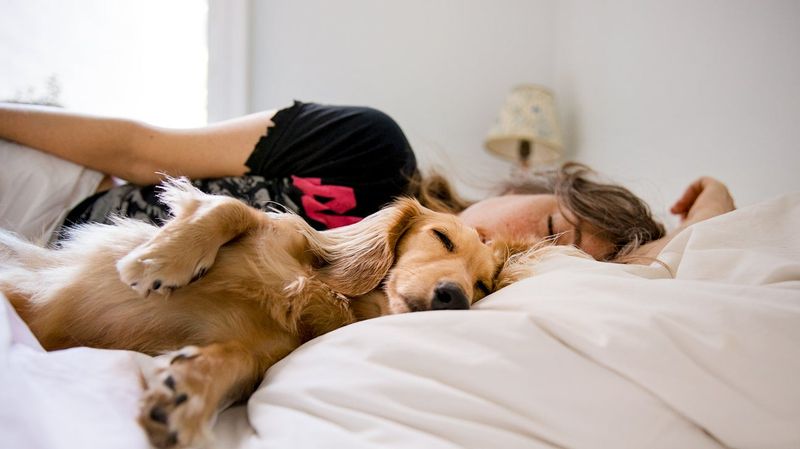Is It Safe to Sleep With Your Pet? Here’s 7 What You Need to Know
Snuggling up with your furry friend at bedtime might feel like the most natural thing in the world. For many pet owners, the day doesn’t feel complete until their cat curls up by their feet or their dog claims a spot under the covers. Pets aren’t just animals—they’re family, and sharing a bed with them can feel like an extension of that deep emotional bond. The comfort, companionship, and sense of security they bring can be incredibly soothing, especially after a long day.
In fact, studies show that a significant percentage of pet owners—especially dog and cat lovers—regularly invite their animals into their sleeping space. But as heartwarming as those cuddles can be, this nighttime routine raises a few important questions. Could your pet be disrupting your sleep without you realizing it? Are there health concerns to be aware of? And how does this habit affect your pet’s behavior, boundaries, and overall well-being?
Experts in veterinary medicine, sleep science, and behavioral training offer a wide range of opinions on whether it’s wise—or risky—to co-sleep with your pet. Some say it’s perfectly harmless or even beneficial, while others caution against the potential downsides.
So before you fluff your pillow and lift the blanket for your furry companion tonight, let’s unpack what the science and specialists actually say about the pros and cons of sharing your bed with your pet.
1. The Comfort Factor: Why Many Pet Owners Say ‘Yes’
Curling up with a warm, purring cat or a loyal dog can create an incredible sense of security and comfort. Many pet owners report falling asleep faster and feeling more relaxed when their furry friends are nearby. This comfort isn’t just in your head—studies show that petting an animal can release oxytocin, the same feel-good hormone that bonds mothers to babies.
For people living alone, the presence of a pet can ease loneliness and provide a sense of protection. Your cat’s gentle purr or your dog’s steady breathing creates a natural white noise that many find soothing. Some pet owners even claim their animals help ward off nightmares or anxiety.
The psychological benefits extend beyond bedtime too. That nightly bonding ritual strengthens your relationship with your pet, potentially improving both your mental health and theirs. For many, these emotional benefits outweigh any potential drawbacks of sharing sleeping space.
2. Allergies, Asthma, and Fur: The Health Downsides to Consider
Even devoted pet lovers should think twice about bed-sharing if they have allergies or asthma. Your pet carries dander, pollen, and outdoor allergens in their fur, which get transferred directly to your pillows and sheets. Each night spent with your pet means eight hours of close exposure to these triggers, potentially worsening symptoms over time.
Sensitive individuals may experience stuffy noses, itchy eyes, coughing, or even serious asthma attacks. Don’t assume you’re in the clear just because symptoms aren’t obvious right away. Allergic reactions can develop gradually or suddenly, even if you’ve lived with pets for years without problems.
Pet-free bedrooms create a clean breathing zone for those eight critical hours of sleep. If you suspect allergies but can’t bear to ban your buddy, try compromises like a pet bed next to yours, more frequent bathing of your pet, or using air purifiers with HEPA filters to reduce allergen levels in your bedroom.
3. Sleep Quality and Disruptions: A Two-Way Street
Your furry friend might be disrupting your sleep more than you realize. Dogs and cats have different sleep cycles than humans, often becoming active when you’re trying to reach deep sleep. A Mayo Clinic study found that 20% of pet owners reported sleep disruptions from their animals moving, barking, snoring, or demanding attention during the night.
Space becomes another consideration—especially with larger dogs or multiple pets. When animals claim prime mattress real estate, you might find yourself contorted into uncomfortable positions. This physical restriction can prevent you from naturally shifting positions during sleep, leading to stiffness and poor rest quality.
Interestingly, your sleep habits might affect your pet too. Human tossing and turning, alarm clocks, and irregular schedules can stress animals who need consistent rest. Some veterinarians suggest that separate sleeping arrangements might actually benefit both parties, allowing everyone to establish healthy sleep patterns without interference.
4. Training and Behavior Impacts: Setting the Right Boundaries
Allowing your pet in bed sends powerful messages about hierarchy in your household. For some dogs, especially those with dominant tendencies, sleeping in your bed might reinforce the idea that they have equal or higher status than you. This misconception can lead to behavior problems like possessiveness, aggression, or disobedience during waking hours.
Consistency matters tremendously in pet training. If sometimes you allow bed privileges but other times you don’t, your pet becomes confused about rules and boundaries. This inconsistency can create anxiety for your pet and frustration for you when they don’t understand why the rules keep changing.
Professional trainers often recommend establishing clear sleeping boundaries from day one, especially with puppies and kittens. If you do want your pet in bed, teach them commands like “up” and “off” so they understand bed access is a privilege you control. Remember that changing established sleeping habits can be challenging, so consider your long-term preferences before creating patterns that might be hard to break.
5. Hygiene and Cleanliness: What’s Really Crawling into Your Sheets?
Your adorable pet brings more than just cuddles to bed. Outdoor pets track in dirt, bacteria, and occasionally parasites like fleas or ticks. Even indoor pets carry saliva, dander, and sometimes fecal particles on their paws and fur. These unwelcome hitchhikers end up on pillowcases and sheets, creating potential health concerns.
Regular bathing and grooming significantly reduce these risks but rarely eliminate them completely. Pets that go outdoors should have paws wiped before bedtime, and all animals should maintain current parasite prevention treatments. Without these precautions, your bed becomes a collection site for everything your pet encounters.
Practical solutions include washing bedding more frequently (ideally weekly), using washable pet blankets on top of your comforter, or establishing a grooming routine before bedtime. Some pet owners find that waterproof mattress protectors provide peace of mind, especially with older pets or those prone to accidents. These simple habits allow you to enjoy companionship without compromising cleanliness.
6. Pets and Children: What to Know Before Everyone Piles In
Family beds that include both children and pets require careful consideration. Young children lack the strength and awareness to protect themselves if a pet becomes startled or territorial during sleep. Even the gentlest animals can react unpredictably when awakened suddenly or when feeling trapped or crowded.
Supervision becomes nearly impossible during sleep, creating a safety gap. Experts generally recommend keeping pets out of beds where infants sleep due to suffocation risks and potential allergic sensitization during crucial developmental stages. For toddlers and older children, parents should assess both the child’s responsibility level and the pet’s temperament before allowing shared sleeping.
Age-appropriate boundaries help children understand respect for animals. Teaching kids not to disturb sleeping pets, pull tails, or make sudden movements creates safer interactions. Many families find that a gradual approach works best—perhaps allowing supervised daytime cuddles on beds before considering overnight arrangements. Remember that both children and pets need consistent rules to feel secure in their sleeping environment.
7. Vet and Expert Recommendations: What Science Actually Says
Veterinarians and sleep specialists offer nuanced perspectives that go beyond simple yes-or-no answers about pet co-sleeping. Research from the Mayo Clinic Sleep Disorders Center found that 41% of pet owners reported benefits from sleeping with pets, while others experienced significant disruptions. These mixed results suggest that the right choice depends on individual circumstances.
From the animal health perspective, most healthy adult pets can safely share beds with healthy adults. However, immunocompromised individuals, people with certain skin conditions, or those with severe allergies might receive different medical advice. Similarly, very young puppies might benefit developmentally from sleeping near their human family rather than alone.
The consensus among experts emphasizes compromise solutions when complete bed-sharing isn’t ideal. These include pet beds placed directly beside human beds, crate training with positive reinforcement, or designated pet areas on the bedroom floor. Many veterinarians recommend following your own comfort level while ensuring both you and your pet get adequate, quality sleep—regardless of the specific arrangement you choose.










